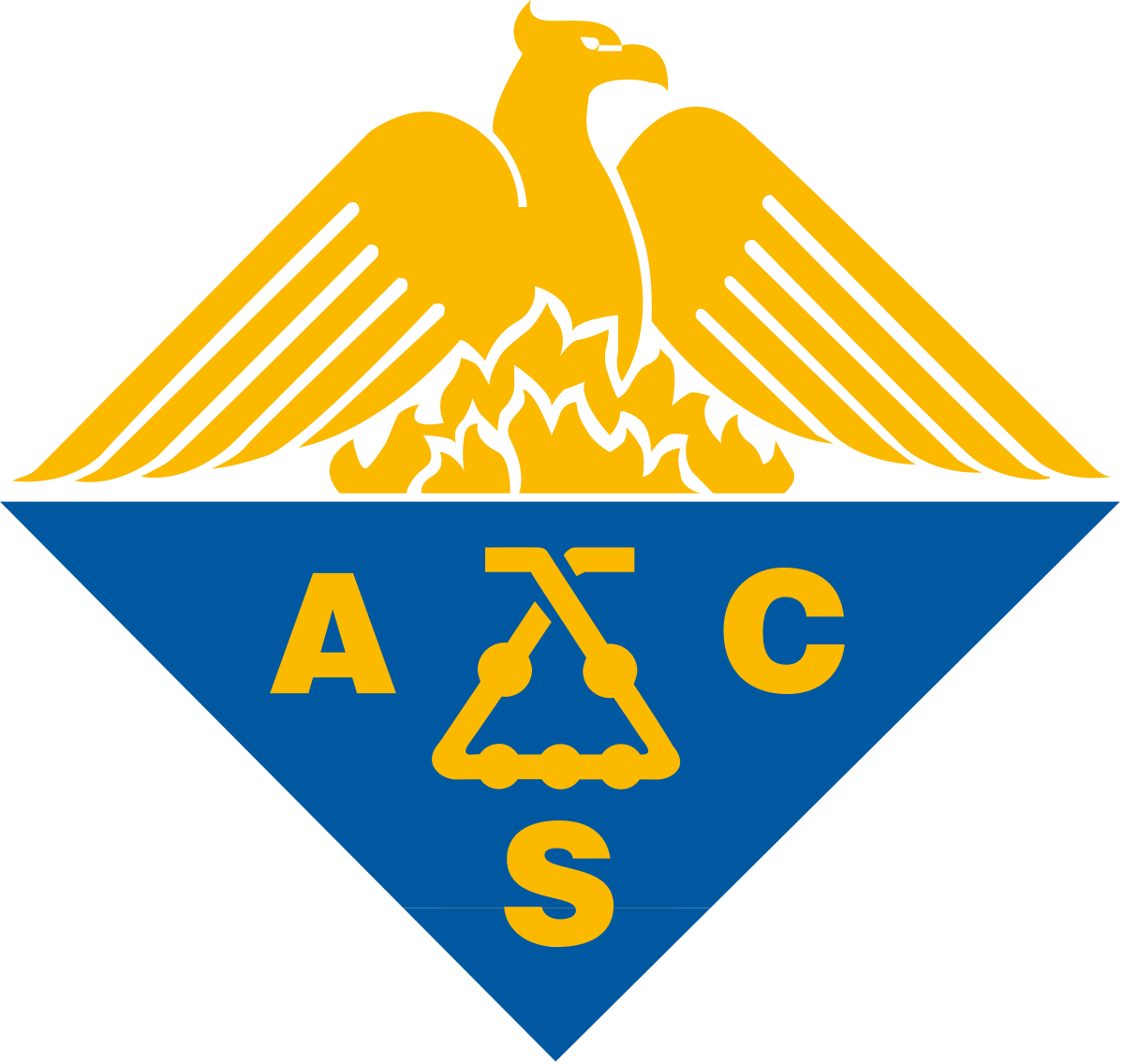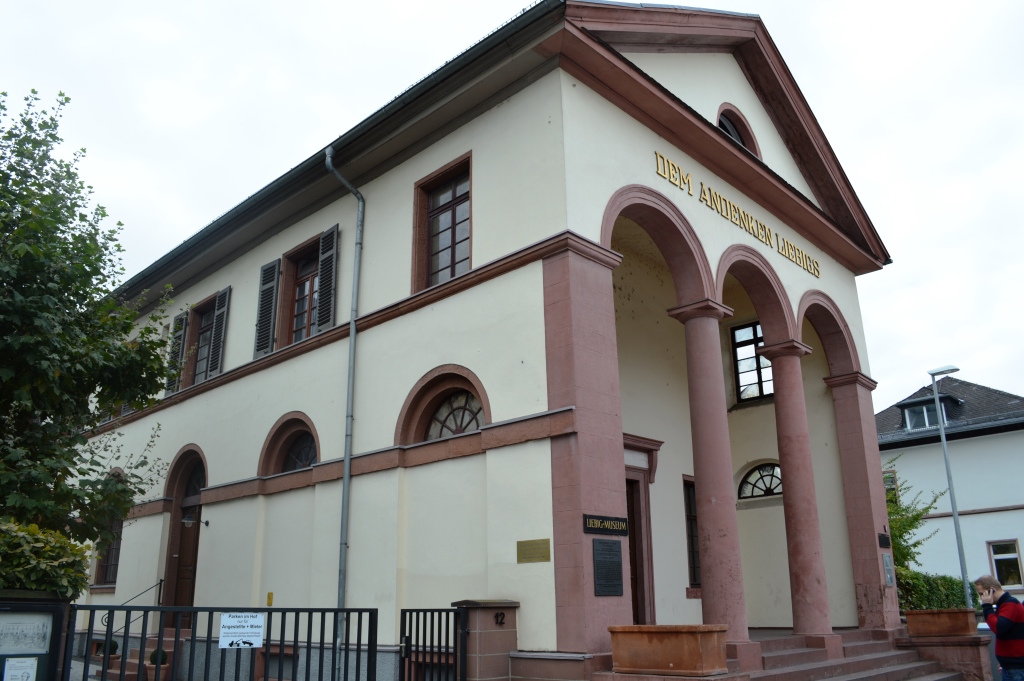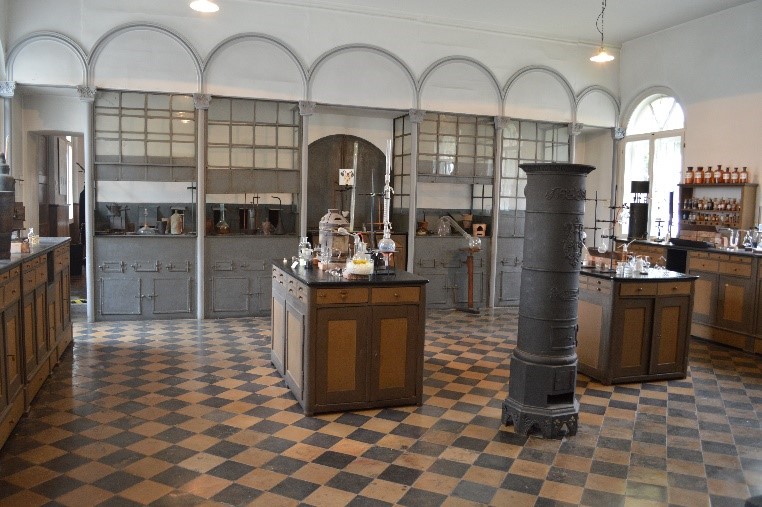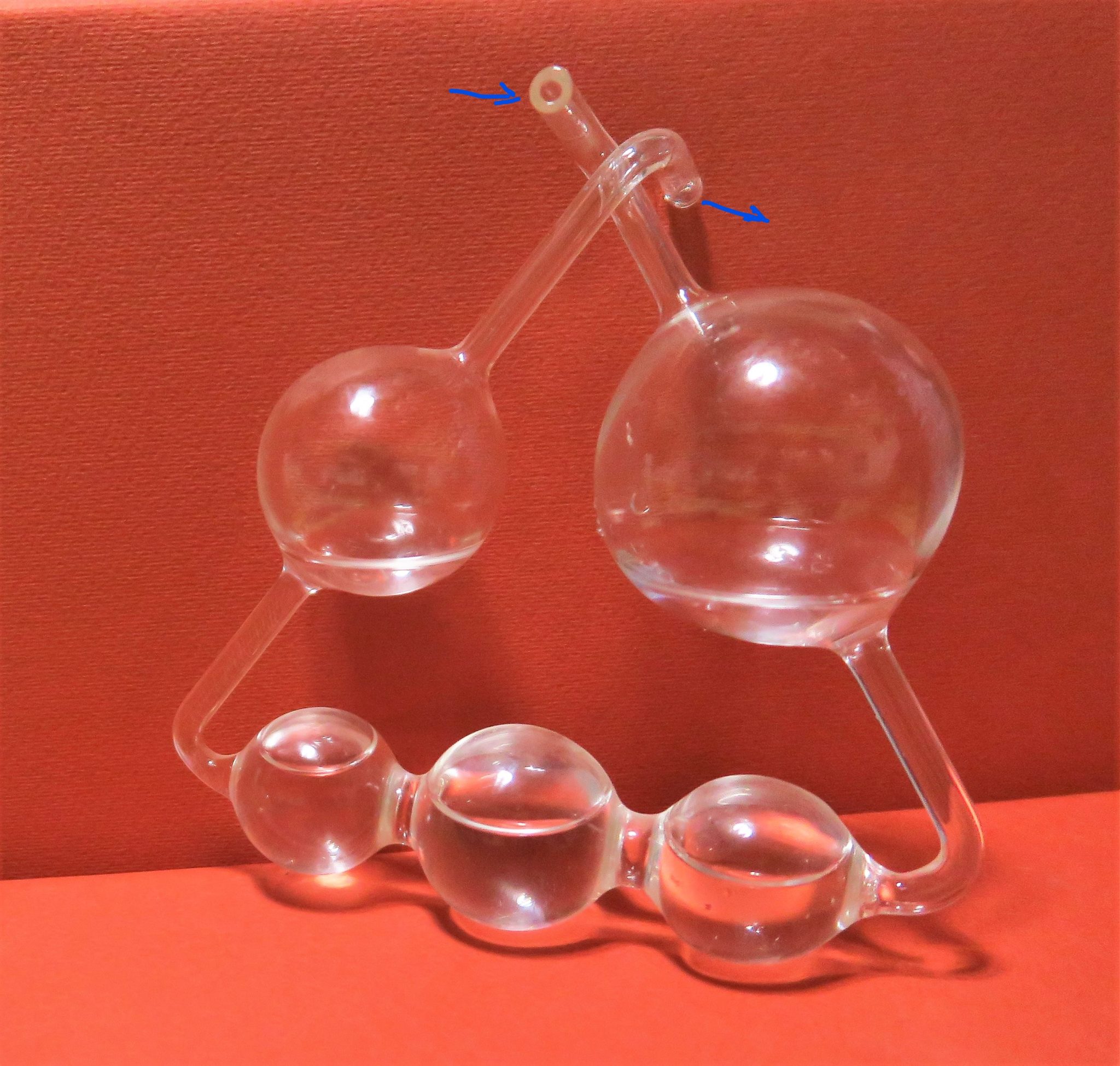,The Logo of American Chemical Society
At the center of the logo of the American Chemical Society, under the Eagle, there is a strange object made from five balls joined together. But what does it represent? And why is it so important to be included in the logo of one of the most prestigious and oldest chemical society? (Its Foundation is of 1876)

The Logo of American Chemical Society
Even more surprising is the discovery that in the wall of the Sterling Chemistry Laboratory (1923) of Yale University (USA) is insert the stone image of the same object.

Who had the idea to put it in the logo of ACS? American Chemical Society was founded in 1876 by 35 chemists gathered in New York City. J. l. Smith, one of the founders, suggested to insert in the society’s logo this object ?. But where had seen and mainly used this object? J. l. Smith had been, like many other European and American chemists, in the laboratory of Justus von Liebig in Giessen in Germany, as a student in 1842 to learn laboratory techniques, in particular the technique for elemental analysis of organic substances .
We visit the laboratory in the Institute of Chemistry of Liebig a Giessen
It is one of the laboratories of the ’800 who is better preserved to this day. Today it is a Museum of chemistry among the most interesting in the world. Well worth a visit.

The Institute of chemistry of Liebig in Giessen in Germany. It was converted from a military barracks in 1819. In 1825 Liebig replaced the Prof. Zimmermann at the helm of the institution. He led until 1852, when he moved to the University of Munich
The Museum consists of many environments, including the study of Liebig. A larger room was meant to be, for the time, a modern laboratory, designed by Liebig (1834), which was attended by chemists from all over Europe and even America.
 The new laboratory was equipped with hoods, a novelty at the time, which eliminated most of the health problems. The environment workshops, prior to installation of the hoods, was so unhealthy that underwent severe stress chemists who worked there. The “hysteria of the chemist“, a disease in itself, was the diagnosis which was most frequently diagnosed. In one of the two central banks there are two laboratory apparatus used for the analysis of organic substances. In both we see our glass object (see image below )
The new laboratory was equipped with hoods, a novelty at the time, which eliminated most of the health problems. The environment workshops, prior to installation of the hoods, was so unhealthy that underwent severe stress chemists who worked there. The “hysteria of the chemist“, a disease in itself, was the diagnosis which was most frequently diagnosed. In one of the two central banks there are two laboratory apparatus used for the analysis of organic substances. In both we see our glass object (see image below )

The object was part of the apparatus for elemental analysis. It was designed by Liebig (1831). Its location relative to the device is highlighted in the image below taken from Encyclopedia of chemistry Vol. II 1868 prepared by Prof. Francesco Selmi.

The device is similar to the first example appeared in Liebig’s laboratory in the late 1930s of the ’800.
How it worked the apparatus for elemental analysis
We observe the figure above. In metal oven F was placed on a layer of charcoal, a glass tube closed at one end and containing the organic matter to be analyzed and cuprous oxide. Warming the copper oxide split into copper and oxygen . It was the latter that powered the combustion of organic matter. Do not use air, oxidation was more complete, and the speed of the reaction is controlled by the degree of heating of the oven. The unit, as it represented, was used for the analysis of compounds such as aldehydes, alcohols, ketones etc.. Nitrogenous compounds were excluded. Combustion products CO2 and H2O came out from the end A, passing the tube filled with calcium chloride C holding back the water, while carbon dioxide bubbled in our five-glass bubbles containing a solution of hydroxide potassium, and for this called “Kaliapparat”, where it was absorbed. The design of Kaliapparat was meant to facilitate the absorption of carbon dioxide by increasing the absorbent surface and the gas path.

The Kaliapparat . In the big bubble bubbling gases coming from the combustion of organic substance while the smallest was connected with the final part of the tool.
After the combustion
After combustion was broken the end B of the pipe F , the air came in , after first dried, flowed through the apparatus, sucked through extremity E ( operation was not without risks). The operation was to remove from the device the last traces of water and carbon dioxide. Note that a bubble of glass H was posted after the five bubbles. It was filled with potassium hydroxide solid. Its function was to retain traces of CO2 gas that could escape the Kaliapparat and/or the droplets of water that could be transported by the latter from the final air flow.
Carbon and Hydrogen
When the performed was over the weight gain of the pipe C provided the amount of water produced by combustion and thus the amount of hydrogen element in the sample . Weight gain that was recorded in Kaliapparat D more eventually that one in the bull H gave the amount of CO2 produced by combustion from which it is deduced the weight of the carbon element in the sample . The difference between the weight of the sample and the elements carbon and hydrogen found, provided the amount of oxygen contained in the sample.
The contribution of Kaliapparat
The procedure for performing an analysis was actually very meticulous, made by many tricks, for example Kaliapparat were sloped during the analysis with the biggest bubble at the bottom, and precautions, including check appliance holding because it worked in a vacuum. It took six years to Liebig to perfect his method of analysis. The biggest difficulty was to get a quantitative uptake of CO2. A result that he reached with his nifty tool in five bubbles, the “Kaliapparat” which was used for three quarters of a century. An analysis was accomplished in less than an hour. That skilled investigator who was Berzelius employed in the analysis of an organic substance not less than two days.
(In the bibliography lists references that describe the operation of the equipment and of the absorber Kaliapparat)
Scales made to measure
Because the elements were obtained by gravimetric analysis was necessary to have sensitive and accurate scales. Nella stanza of scales, adjacent to the laboratory of Liebig, still save the balance that he built on his plan by a local cabinetmaker. It had a range of up to 100 grams and an accuracy of 0.3 mg. For instance the combustion of a sample of 0.5 g produced something like a gram of CO2 with an accuracy better than 0.1%. A curious note, each weighing, the long arms of the balance swung slowly back and forth many times before stopping. The operation was so boring that was called “the martyrdom of weighing”. Liebig made it more bearable for themselves as a smoker, coining the motto “a cigar for each weighing”.
A long history
For over 150 years since the time of Lavoisier until World War II, the analysis by combustion was the primary tool for the progress of organic chemistry. Many of our current understanding were possible using this tool. The main improvements during this long period consisted in improving the convenience of this method and in reducing the sample size needed for analysis of biological molecules.
From Lavoisier to Pregl
The analyses of Lavoisier (1780) could consume more than 50 g of vegetable oils, required a team of operators and very expensive (you can see the device to the beautiful Museum of Arts and crafts in Paris). Forty years after Liebig, modifying the approach of Berzelius, devised an apparatus that required an amount of sample which was only 1% of that used by Lavoisier (0.5 g). The analysis could be done quickly by a single student with a economical equipment. Almost one hundred years after Liebig, Fritz Pregl was awarded the Nobel Prize 1923 to have miniaturized the apparatus that required a specimen whose weight was only 1% of that employed by Liebig (5 mg or less).
A memory
I visited the Institute of chemistry of Liebig in Giessen in 2012, during a stay in Germany. I think it was one of the most interesting and engaging visits in places of chemistry. Prof. Manfred Kroeger, University of Giessen, one of the curators of the Museum, escorted us to visit explaining in detail and with patience the history and Museum environments. They were on sale at the Museum’s workshop Kaliapparat real scale models built by students of chemistry.
The film material
During the visit to Giessen I took many photographs and made films , than I transferred on You Tube. In the first video we see Liebig’s laboratory at Giessen. Liebig moved to the University of Munich in 1852. At the Deutsches Museum, the Museum of science and technology in Munich, you can see a partial reconstruction of the laboratory of Giessen. The Museum is another place of exceptional value for the history of science and technology (especially chemistry). In the second film is filmed the laboratory of Liebig at the Museum of Munich.
https://www.youtube.com/watch?v=MLFNKonPSzs&t=29s
https://www.youtube.com/watch?v=Hr2Qq3QzwVM
In my blog
https://www.robertopoetichimica.it/la-composizione-delle-sostanze-la-combustione/
Bibliografia
- http://www.che.uc.edu/jensen/w.%20b.%20jensen/Museum%20Notes/40.%20Combustion%20Analysis%20.pdf
- https://www.beautifulchemistry.net/liebig/
- http://chem125-oyc.webspace.yale.edu/125/history99/4RadicalsTypes/Analysis/Kali/kaliapparat.htm
- http://chem125-oyc.webspace.yale.edu/125/history99/4RadicalsTypes/Analysis/Liebiganal.html
- http://www.treccani.it/enciclopedia/l-ottocento-chimica-analisi-chimica_%28Storia-della-Scienza%29/
- Nuovo Dizionario Universale , Tecnologico e di Arti e mestieri . Autori vari . Tomo XXXVI , prima traduzione italiana ,Venezia 1845
- Trattato Elementare di Chimica di Sebastiano Purgotti . Tomo III Chimica Organica . Perugia 1857
- Enciclopedia di Chimica II del 1868 curata dal Prof. Francesco Selmi .


